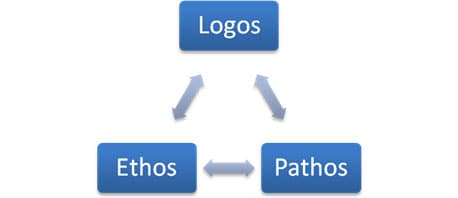Strategies
Close Reading of a Text – Mise-en-Scène
Commonly put into practice by the film journal Cahiers du Cinema, mise-en-scène is a French term meaning "putting in the scene": mise-en-scène gives students a language in which to discuss the visual aspects of a piece. There are a variety of ways this concept can be taught. Most commonly there are different versions to be found in David Bordwell and Kristin Thompson's Film Art, Louis Gianetti's Understanding Movies, and Robert Kolker's Film, Form, and Culture. Basically, mise-en-scène is essentially what it means in French; it is the director's composition of the visual text. These factors can basically be broken down into five separate categories: setting, costume/make-up, lighting, staging, acting.
Setting
Most commonly refers to the time and the place that is depicted by the actors' world. This is also achieved by the use of props. Important aspects to ask while looking at setting are:
- What does the setting tell us about place and time?
- What does the setting reveal to us about mood?
- What props have any special significance to the narrative?
Costume/Make-Up
These two attributes can also refer to the time and the place that characters inhabit. Additionally, costume/make-up can reveal aspects about characters and their role in the narrative. Questions students may want to ask about costume/make-up:
- How does costume/make-up function in relation to the narrative?
- Does costume/make-up reveal anything about our characters (or, their relationships to other people)?
- Does costume/make-up reveal anything to use about the place and time?
- Do costume/make-up serve as any kind of narrative marker?
Lighting
While setting, costume, and make-up can set mood, lighting also conveys that effect. Lighting can tell an audience simple things like the time of day, or the manipulation of lighting can help draw the reader's eyes to a particular aspect of the composed frame.
Some questions students should use when thinking about lighting concepts:
- What does the lighting tell us about the time of day?
- Does the lighting highlight certain characters or props?
- Are certain characters lit differently than others via lighting cues (soft lighting, high-key lighting), or colors (reds, blues, greens, etc.)?
Staging
This functions as the choreography between the actor(s) and the camera. The level of intimacy between the actors and the lens can suggest many things about the actors' intentions, feelings, and mood. When students think about staging they should be asking questions like:
- What does the staging tell us about the relationship between actors?
- What does the staging tell us about the relationship between actors and props?
- What does the staging tell us about the relationship between the actor and the audience?
Acting
There are a variety of interpretations of acting. The important part to focus on is what does the acting convey about the relationship of the character and himself, the character and other characters, and the character and the audience. When looking at acting in a given text it is important to ask these questions:
- What about the acting provides other dimensional qualities of a character?
- How is the voice manipulated to create mood?
- What do the gestures of a character reveal to us?
Close Reading of a Text – Rhetorical Analysis
Introduced first by Aristotle, messages are conveyed with the use of three rhetorical appeals. It can be schematized like this:

It is important to acknowledge rhetorical appeals as an equilateral triangle, in that all sides are as important. These points of convergence are contingent upon three appeals: logos, ethos, pathos.
Logos relies on the logical appeals of an argument. This is where the message or the visual argument is to be found. This is when a text makes logical claims and provides evidence in support of those claims. Ethos relies on the ethical appeal of an author. This is how authors establish a persona. This can also be thought of as the credibility of an argument and offers a space in which the author can allow evidence to support their credibility as a source. Lastly, pathos relies on the emotional appeal of an argument. This is usually a reflection of the author's expectations of an audience.
Another aspect of close reading in reference to rhetoric are the rhetorical situations: exigence, audience, and purpose. Exigence is often confused with an author's purpose. In the case of rhetorical situations, exigence needs to be evaluated as what drives an author to write. Audience, is the simplest of all rhetorical situations: who is the audience the author is reaching for. Purpose, while often confused with exigence, is what an author wants a reader to do or feel when he or she has finished reading the text.

Comments: